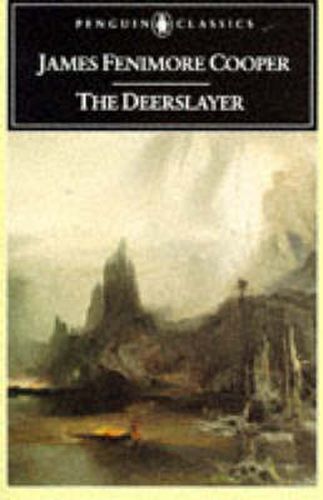Readings Newsletter
Become a Readings Member to make your shopping experience even easier.
Sign in or sign up for free!
You’re not far away from qualifying for FREE standard shipping within Australia
You’ve qualified for FREE standard shipping within Australia
The cart is loading…






James Fenimore Cooper’s spirited romance has been praised for its authenticity as a portrait of life during America’s western movement.
At Lake Otsego, during the French and Indian Wars, great frontiersman Natty Bumppo forsakes his love to come to the aid of Thomas Hutter, a trapper under the attack of Iroquois Indians.
Published in 1841, The Deerslayer is the first of the ‘Leatherstocking Tales,’ which reveal the courageous and perseverant nature of the pioneer.
Recognized for his descriptive power, Cooper created in Natty Bumppo a mythical character-one of the most significant in the history of American literature.
The text of this book was approved by the Center for Scholarly Editions of the Modern Language Association and published in hardcover by the State University of New York Press.
Introduction by DONALD E. PEASE
$9.00 standard shipping within Australia
FREE standard shipping within Australia for orders over $100.00
Express & International shipping calculated at checkout
Stock availability can be subject to change without notice. We recommend calling the shop or contacting our online team to check availability of low stock items. Please see our Shopping Online page for more details.
James Fenimore Cooper’s spirited romance has been praised for its authenticity as a portrait of life during America’s western movement.
At Lake Otsego, during the French and Indian Wars, great frontiersman Natty Bumppo forsakes his love to come to the aid of Thomas Hutter, a trapper under the attack of Iroquois Indians.
Published in 1841, The Deerslayer is the first of the ‘Leatherstocking Tales,’ which reveal the courageous and perseverant nature of the pioneer.
Recognized for his descriptive power, Cooper created in Natty Bumppo a mythical character-one of the most significant in the history of American literature.
The text of this book was approved by the Center for Scholarly Editions of the Modern Language Association and published in hardcover by the State University of New York Press.
Introduction by DONALD E. PEASE